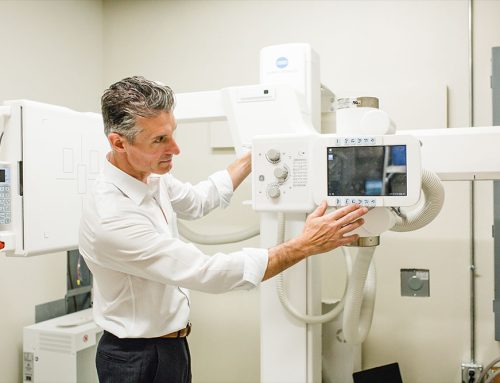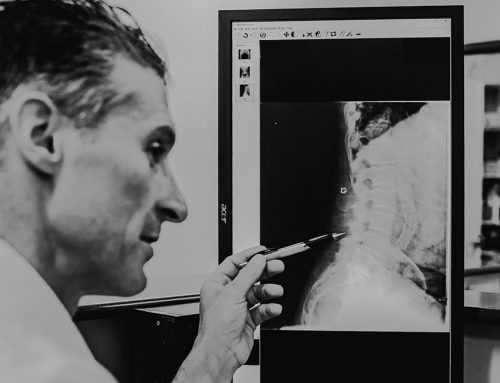When it comes to doing certain activities such as walking or lifting objects, your body needs support and stability and the absorption of any impact so that the more sensitive areas of your body are not injured.
Two critical joints that provide your body with the needed support, stability, and impact absorption are the sacroiliac joints.
What Are Sacroiliac Joints?
Located in the pelvis between the iliac bones and the sacrum are the SI joints connecting the spine to the hips. If you look at the body from the back, you will see the sacroiliac joints below the waist, where there are two dimples.
Because of its location, the SI joint enables the transfer of weight and force between the upper body and your legs. The SI joint is essential when it comes to transferring energy throughout the torso and legs.
Stabilization of the SI joint comes from a network of ligaments and muscles, and these portions of the anatomy also assist in limiting the motion of the SI joints.
Only a little movement is possible for the SI joint, and a normal SI joint can travel 2-4mm in any direction. Women have slightly more movement in the sacroiliac ligaments – a necessity for childbirth – but the difference between men’s and women’s movement in the SI joint is not extreme.
What Is Sacroiliac Joint Dysfunction?
When any or all of the components within the SI joint that are necessary for stability are not functioning properly, this is called sacroiliac joint dysfunction. Pain from sacroiliac joint dysfunction may be located in the SI joint or the soft tissue or other body areas around the joint.
If a patient has sacroiliac joint dysfunction, they may feel lower back pain, leg pain, or pain in the buttocks. Patients who feel pain in the lumbar spine or anywhere in the SI joint area must make an appointment with their physician, who will conduct tests and determine the source of pain.
It could be SI joint dysfunction, but some other dysfunction may also cause it.
Causes Of Sacroiliac Joint Pain
Pain in the sacroiliac joint often occurs when movement in the pelvis is different between the two sides. Suppose one leg is longer or weaker than the other. Uneven movement can occur, leading to pain.
Other causes of sacroiliac joint dysfunction include:
- traumatic injury – fall, impact, motor vehicle accident, or other sudden impacts
- arthritis – both wear-and-tear arthritis as well as ankylosing spondylitis
- pregnancy – the loosening and stretching necessary for childbirth as well as the added weight and altered gait may result in stress on the joints and abnormal wear
- infection
- hip/spine surgery
- autoimmune diseases
The sacroiliac joint dysfunction often results in low back pain, and this pain can extend into the lower half of the body.
Symptoms of Sacroiliac Joint Dysfunction
Pain is the most common symptom of sacroiliac joint dysfunction, and this pain generally begins in the lower back or buttocks. It can extend, though, into the lower hip, groin, or upper thigh area.
The pain in the sacroiliac joint is usually one-sided, but some patients have complained of pain on both sides and numbness, tingling, or weakness in the leg.
Symptoms of SI joint dysfunction typically worsen with prolonged sitting, standing, sleeping, walking, or climbing stairs. With sacroiliitis, the back, buttock, and leg pain can also worsen when doing transitional movements such as standing up after sitting for a time or other movements such as standing on one leg or climbing stairs.
Pain in the SI joints can be increased with running, taking large strides, and other movements previously mentioned.
Diagnosis of Sacroiliac Joint Pain
During a medical examination with your spine specialist, the SI joints will be tested to determine whether or not they are the source of your pain. In addition to medical history and a description of the location of your pain, the doctor will also typically conduct specific tests.
During the physical exam, your doctor may ask you to stand or move in specific ways. If you feel pain in certain areas during these movements, your physician will want you to indicate that. They may also manipulate your sacroiliac joint and see if you have any tenderness in the area.
Additionally, other diagnostic imaging tests may be conducted, including x-rays, CT, or MRI scans to assist with the diagnosis. These scans will also search for any other spine conditions or hip issues that may be the source of your pain.
Lastly, a diagnostic SI joint injection may be used to determine conclusively if the sacroiliac joint is the problem. During the test, the sacroiliac joint is injected with a local anesthetic and a corticosteroid.
Your sacroiliac joint pain is then monitored for the next week, and if the SI joint pain decreases by more than 75%, then your doctor will know that it is the joint causing your discomfort in your low back rather than any other possible concern.
Pain Management and Treatment of SI Dysfunction
If you are experiencing discomfort in the sacroiliac joint area, especially while engaging in the activities previously described, consult the medical advice of a trained orthopedist such as Dr. Daniel Possley. Sacroiliac joint pain can be extremely severe and cause disruptions to your everyday life. You must receive proper diagnosis and treatment so that your body can endure as much movement as it needs to because you have strong ligaments supporting the SI joints.
If your doctor confirms SI joint pain, there are various treatments and SI joint pain management options.
These include both non-surgical and surgical treatments, such as:
- Physical therapy
- Chiropractic manipulation
- Stretching exercises
- Anti-inflammatory medications
- Topical creams or salves
- Medical bracing
- Joint injections
- Nerve ablation
If these non-surgical treatment options are ineffective, your orthopedist may turn to surgical treatments to provide you the much-needed relief. In general, the physician may recommend a minimally invasive SI joint fusion procedure to stabilize the joint and promote bone growth.
Contact An Experienced Orthopedic Spine Surgeon
The best way to prevent discomfort is to make sure you always have good posture and keep up with regular exercises, including stretching and strengthening, maintaining good nutrition and a healthy weight, and managing your stress effectively.
If you are experiencing SI joint problems and need the medical advice of a professional and experienced orthopedist, contact Dr. Daniel Possley today.
He has many years of experience and training dealing with back issues and spine disorders, and his goal is to help you find the comfort and relief you need to live a normal, healthy life.






Leave A Comment